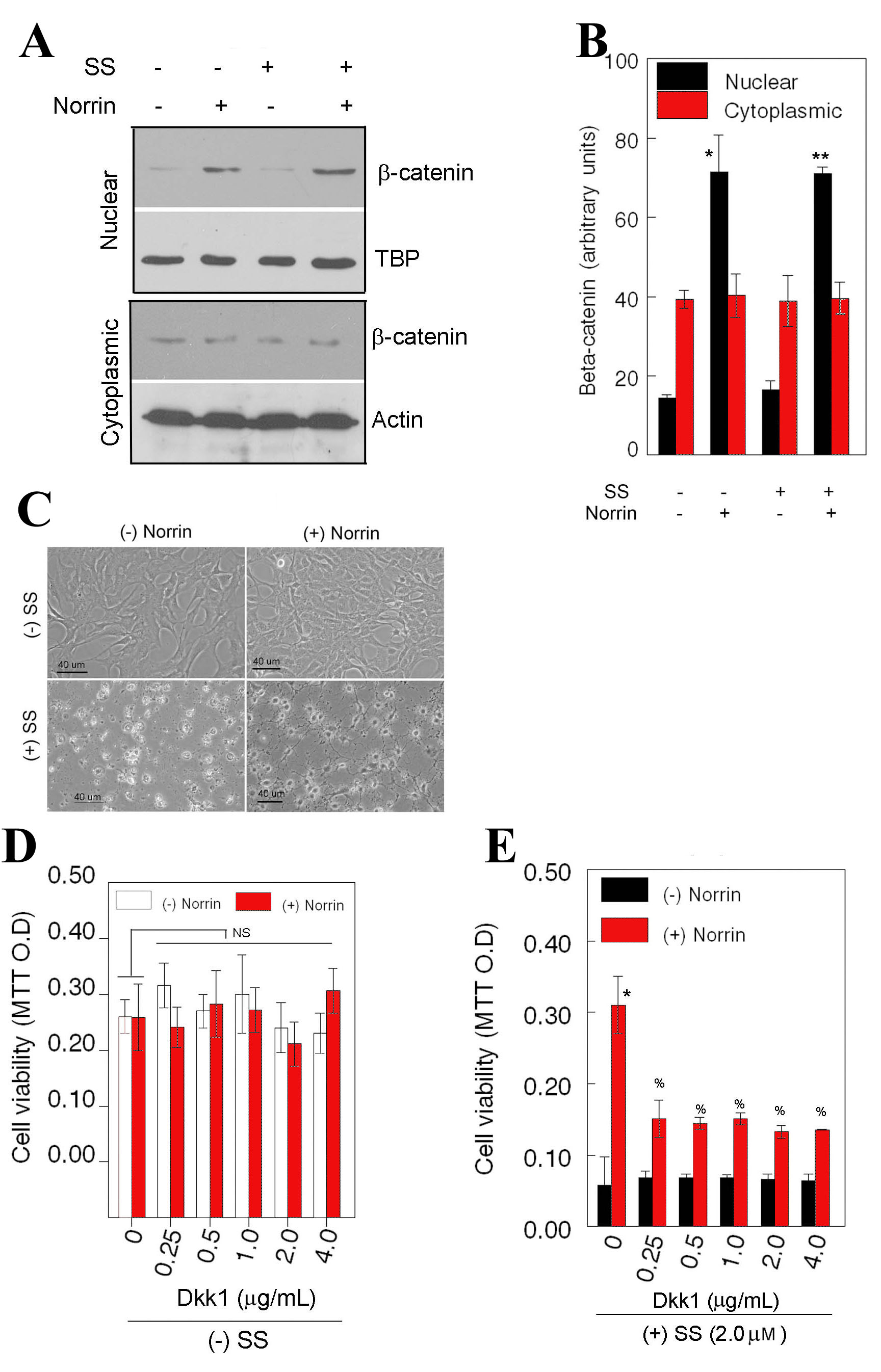Figure 3. Effect of norrin on
Wnt-beta-catenin pathway activation. Retinal ganglion cell (RGC)-5
cells were left untreated or treated for 24 h with 2.0 μM staurosporine
(SS) only or 25 ng/ml SS and norrin. At the end of 24 h, cells were
photographed (C), cytoplasmic and nuclear proteins were prepared
(n=3 experiments), and aliquots containing equal amount of protein (20
μg) were subjected to western blot analysis by using antibodies against
beta-catenin (A). Equal loading of nuclear and cytoplasmic
proteins was determined by reprobing the membranes with antibodies
against TATA binding protein (TBP) and actin, respectively (A).
Compared to untreated cells, beta-catenin levels in nuclear fractions
were increased significantly in norrin-treated cells (A,B,
*p<0.05) and in SS and norrin-treated cells (A,B,**p<0.05).
Micrographs of cells (C) indicate that elevated levels of
beta-catenin associated with increased cell survival. To determine
whether inhibition of Wnt pathway reduces norrin-mediated cell
survival, cells were left untreated or treated for 48 h with norrin (25
ng/ml), Dkk1 (0.25–4.0 μg/ml), or Dkk1 and norrin, in the absence (D)
or presence of 2 μM SS (E) and cell viability was assessed by
3-[4,5-dimethylthiazol-2-yl]-2,5-diphenyltetrazolium bromide (MTT)
assays (n=3 experiments). In the absence SS, Dkk1 had no effect on cell
survival regardless of the presence of norrin (D, NS is not
significant). Compared to SS-treated cells, survival of SS and
norrin-treated cells increased significantly (E,*p<0.05).
Although Dkk1 reduced norrin-mediated cell survival of RGC-5 cells (E,
%p<0.05), Dkk1 failed to reduce the survival similar to that
observed under SS alone-treated conditions.

 Figure 3 of Lin, Mol Vis 2009; 15:26-37.
Figure 3 of Lin, Mol Vis 2009; 15:26-37.  Figure 3 of Lin, Mol Vis 2009; 15:26-37.
Figure 3 of Lin, Mol Vis 2009; 15:26-37. 